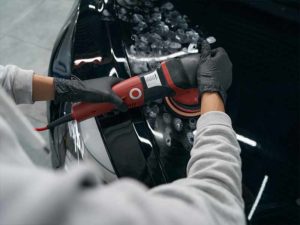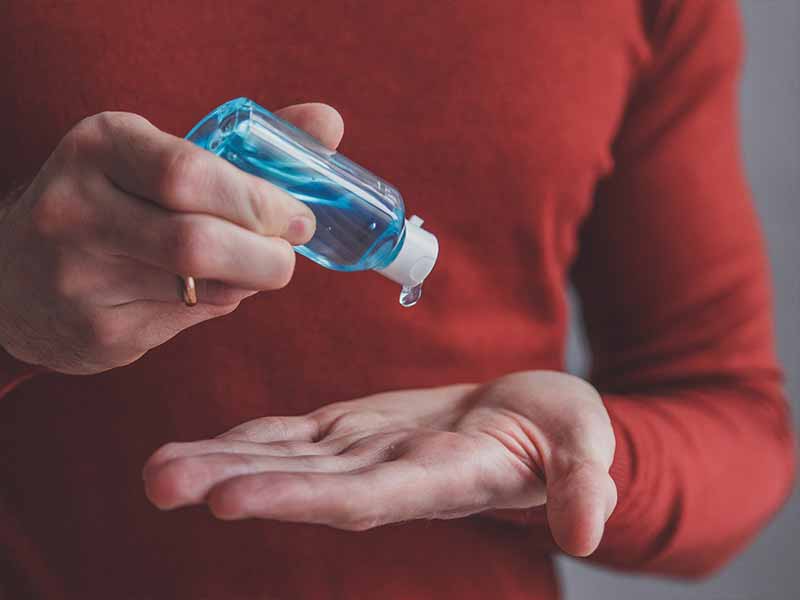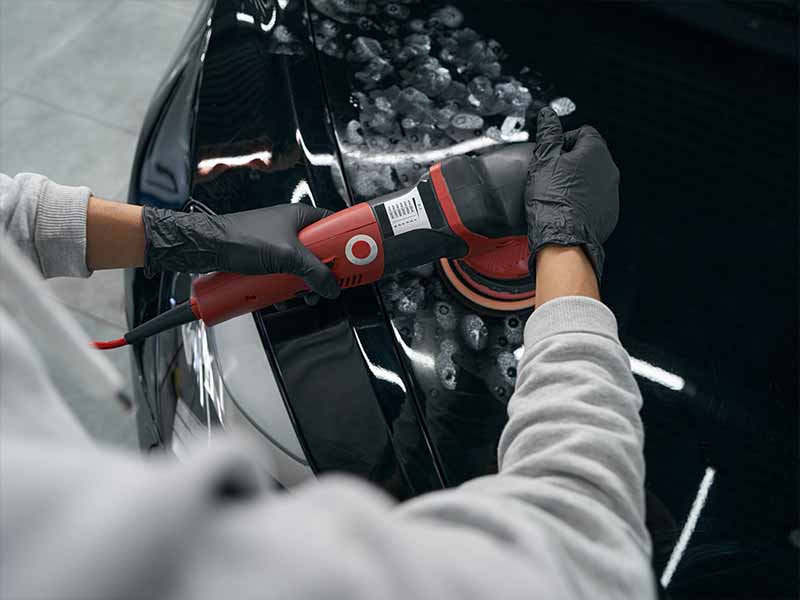Table of Contents
- What Is Paint Correction?
- Paint Correction Steps
- When Do You Need Paint Correction?
- How Long Does Paint Correction Take?
- How Much Is Paint Correction?
- Can You Do Paint Correction Yourself?
- Is Paint Correction Bad for Your Car?
- Ceramic Coating Without Paint Correction
- PPF Without Paint Correction
- Helpful Links
- Conclusion: Is Paint Correction Worth It?
Have you ever spent half the day washing your car so that it would be perfect only to step back to look at your job well done and notice a ton of tiny scratches and swirls in the paint?
You are instantly frustrated and aggravated because you spent so much time hand washing your vehicle to obtain a shiny paint finish and are left with what looks like a bunch of spider webs all over the car.
What Is Paint Correction?
Paint correction is a method of removing fine swirls and scratches in the clear coat of automotive paint. Over time, light scratches dull the finish and when removed help restore a vehicles showroom looks.
The good news is that paint correction can be the solution to your problems. However, you may hesitate at the thought of performing such a task, especially themselves. After all, you are essentially removing the clear coat and some paint along with it. Some people tremble at the thought of this process because of the potential dangers.
So, let’s just get down to the nitty-gritty. Read on if you’re ready to learn more about paint correction, the process, when it’s needed, how much it costs, the potential dangers, and whether it’s worth it.
Paint Correction Steps
Paint correction is not a term or process that everyone knows. You probably know it as polishing or buffing, although professionals prefer a more industry-standard term.
Ultimately, paint correction removes any paint defects and imperfections like fine scratches, swirl marks, etching, oxidation, etc. The process involves using a microfiber buffing pad, an electric polisher, and a special cutting compound.
The paint correction process consists of multiple stages or steps and varies based on the damage that occurs to the clear coat.
1 Step Paint Correction Process
1 Step Paint Correction is probably the most common paint correction process, especially on lighter-colored vehicles. It consists of taking the electric polisher with a microfiber pad and a cutting compound to your vehicle. Ultimately, this one-step paint correction process intends to remove any light swirl marks and marring.
2 Step Paint Correction Process
This process is for vehicle finishes that have not been well maintained and have deeper imperfections and defects. It is often used on darker-colored vehicles, such as black, to remove moderate to medium scratches and swirl marks in the clear coat and paint.
The two-step paint correction process generally requires the use of two different pads and polishes. You will start by using the more abrasive polish first and then use the finer one, which works to remove any more minor, finer scratches that may have been left behind during the first step.
3 Step Paint Correction Process
3 Step Paint Correction is where things get serious, and it is recommended to leave this one to the professionals. The three-step paint correction process tends to be reserved for cars with very heavy marring, swirl marks, and other imperfections or defects.
The first step will use a polishing pad on an electric polisher with a heavy cutting compound. This will dig into the paint to get to the damage. The next step gradually reduces the amount of grit and damage, followed by the final step of a lightweight polishing compound that removes any left-behind damage and levels it all out.

When Do You Need Paint Correction?
Take a close look at your vehicle in the direct sunlight or underneath a streetlamp. Can you see swirl marks and/or scratches? Does it look like there are a lot of spiderwebs all over your vehicle? Do these marks and scratches make your vehicle look dull and less unattractive?
You are not alone! Most vehicles on the road suffer from these swirl marks and scratches, and most car owners don’t know what to do. Eventually, these marks and scratches will get to the point where they cannot be repaired.
So, if your vehicle has these imperfections and defects, you can benefit from the process of paint correction. Paint correction can remove swirl marks, spider webbing, fine scratches, eliminate water spots, get rid of animal waste stains, and much more. This helps improve the overall appearance of your vehicle, enhancing its shine and making it appear like it just came off the showroom floor.
Heading to the Car Show
Suppose you have a vehicle that you plan to take to a car show—investing in paint correction can up your game. You want your vehicle to look best at a car show with hundreds and hundreds of people walking by and checking out your vehicle.
To truly “wow” them and make your vehicle stand out, every imperfection in the vehicle’s paint needs to be removed. This is more important if you have a dark-colored vehicle like black, blue, or red.
Further, if you have an antique car, you want to keep that original paintwork. Otherwise, the value of your vehicle can drop significantly. Luckily, paint correction can help you do that.
How Long Does Paint Correction Take?
There is no clear-cut answer to this. Paint correction takes as long as it takes. It varies from one vehicle to the next based on the extent of the damage and the number of steps needed for the paint correction. The size of the vehicle will also play a role. It may take a few hours, an entire day, or a whole week.
On average, you can expect the one-step paint correction process to take roughly four hours. The two-step paint correction process takes an average of eight hours, and the three-step paint correction process takes up to 12 hours.
Regardless, it is important to understand that paint correction is a time-consuming process, and it is a process you never want to rush due to the potential risks involved.

How Much Is Paint Correction?
The cost of paint correction will also vary from one vehicle to the next. The cost depends on the size of the vehicle, the extent of the damage, and how many stages of paint correction are needed. Ultimately, though, the cost of paint correction ranges anywhere between $500 and $2,500 or more.
Can You Do Paint Correction Yourself?
You can purchase DIY paint correction kits or buy all of the necessary items individually to perform whatever stage of the paint correction process you’d like. However, paint correction isn’t a walk in the park. It is a very time-consuming, labor-intensive task.
In addition, if the process is not performed correctly, it can significantly damage the clear coat and paint beyond repair, as it will increase the number and depth of the scratches in the paint.
Ultimately, to ensure unnecessary damage does not occur, it is best to leave paint correction to the professionals unless you have background knowledge in auto detailing techniques or auto bodywork. However, with the proper tools and research, it is possible to perform paint correction yourself. Just be aware of the risks involved.
Is Paint Correction Bad for Your Car?
A small amount of your vehicle’s clear coat is removed through the paint correction process due to the friction created by the electric polisher and cutting compound. The level of paint correction and choice of polishing compound used will ultimately determine the amount of clear coat removed from your vehicle during the process.
A minimal amount of the clear coat will be removed during the one-step paint correction process since an abrasive compound is not used. Instead, a finishing polish is typically used to focus more on smoothing out the surface.
Your vehicle can undergo too many paint corrections. First, the clear coat will go, and then the paint will start wearing thin. Ultimately, you want to maintain that clear coat, as it serves as a protective barrier, protecting your car’s paint from the elements.
Keep in mind, once your clear coat is gone, it’s gone. The same is true with the painted surface of your vehicle. You don’t want to risk everything for a deep scratch or two, as a professional will have some tricks up their sleeve to minimize its appearance without compromising the clear coat and paint.
Ceramic Coating Without Paint Correction
As a semi-permanent layer over your vehicle’s existing paint, ceramic coating is virtually chip- and scratch resistant offers UV protection, and eliminates acid etching from animal waste.
As a general rule, paint correction is performed on a vehicle before a ceramic coating is applied. This is to ensure optimal results. If you choose to skip the paint correction step, any imperfections and defects in the paint will be locked in by the ceramic coating.

PPF Without Paint Correction
First, it is important to understand a distinctive difference between Paint Protection Film (PPF) and vinyl wrap. Vinyl wraps are designed to change your car’s aesthetic appearance with various customization options without repainting it.
PPF, on the other hand, is thicker and heavier to protect your vehicle’s paint. It is not designed to enhance the aesthetic of your vehicle.
For PPF to be installed correctly, the surface should be clean, dust-free, swirl-free, scratch-free, and as close to perfect as possible. Without paint correction, pre-existing defects, imperfections, and other flaws—chips, scratches, debris, etc.—will be locked in and could be far more noticeable once the PPF has been applied. It is recommended that paint correction be performed on the vehicle to clean and smooth the surface before the PPF is installed.
Helpful Links
Conclusion: Is Paint Correction Worth It?
If you care about your vehicle’s appearance and longevity, investing in paint correction is worth it. Paint correction is the best way to get heads to turn as you drive down the road or pull up in a parking lot.
However, you must understand you must put effort into maintaining your vehicle. It is not a one-and-done thing. Having a good-looking vehicle is a lifestyle. Maintaining the perfect finish will require some upkeep on your part. This includes regular washing and auto detailing.
Hopefully, the information in this article has helped you decide whether paint correction is for you. Ultimately, it will come down to your personal preferences, lifestyle, budget, and how much time and effort you’re willing to put into the future aesthetic maintenance of your vehicle.









